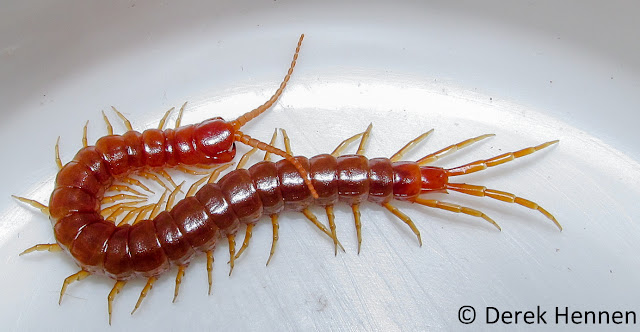December's Centipede

Ohio's had a warm December so far, and I have only seen a few snowflakes here in southeast Ohio. This week has been moderately warm, with temperatures in the high 40s and low 50s (Fahrenheit, that is). We've had a few cold snaps, so I've pretty much stopped looking for any arthropods, except for lady beetles and marmorated stink bugs in my home. Then I went outside to retrieve the mail today. I spotted something moving on the porch and took a closer look: it was a centipede! I ran inside to retrieve a vial, almost falling in the hallway due to my wet shoes (it rained today) and frightening the cat, which ran into the living room. I apologized and ran back outside, just in time to catch the critter before it left the porch and disappeared into the yard. I took it back inside and examined it: it was one of the largest centipedes we have in Ohio, Scolopocryptops sexspinosus . It's in the family Scolopocryptopidae and only has 23 legs--not 100 (no centipede has 100 legs, de...




















